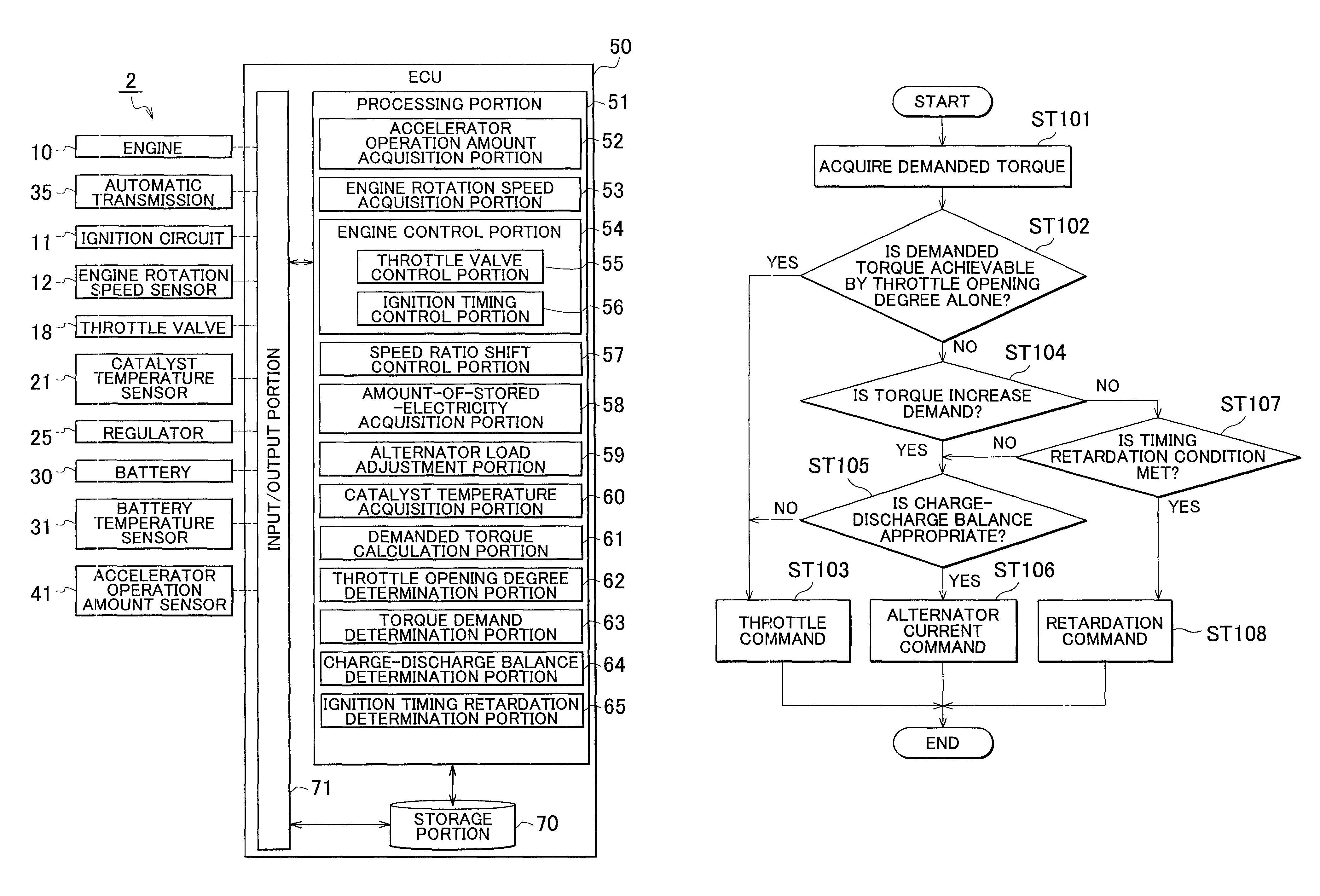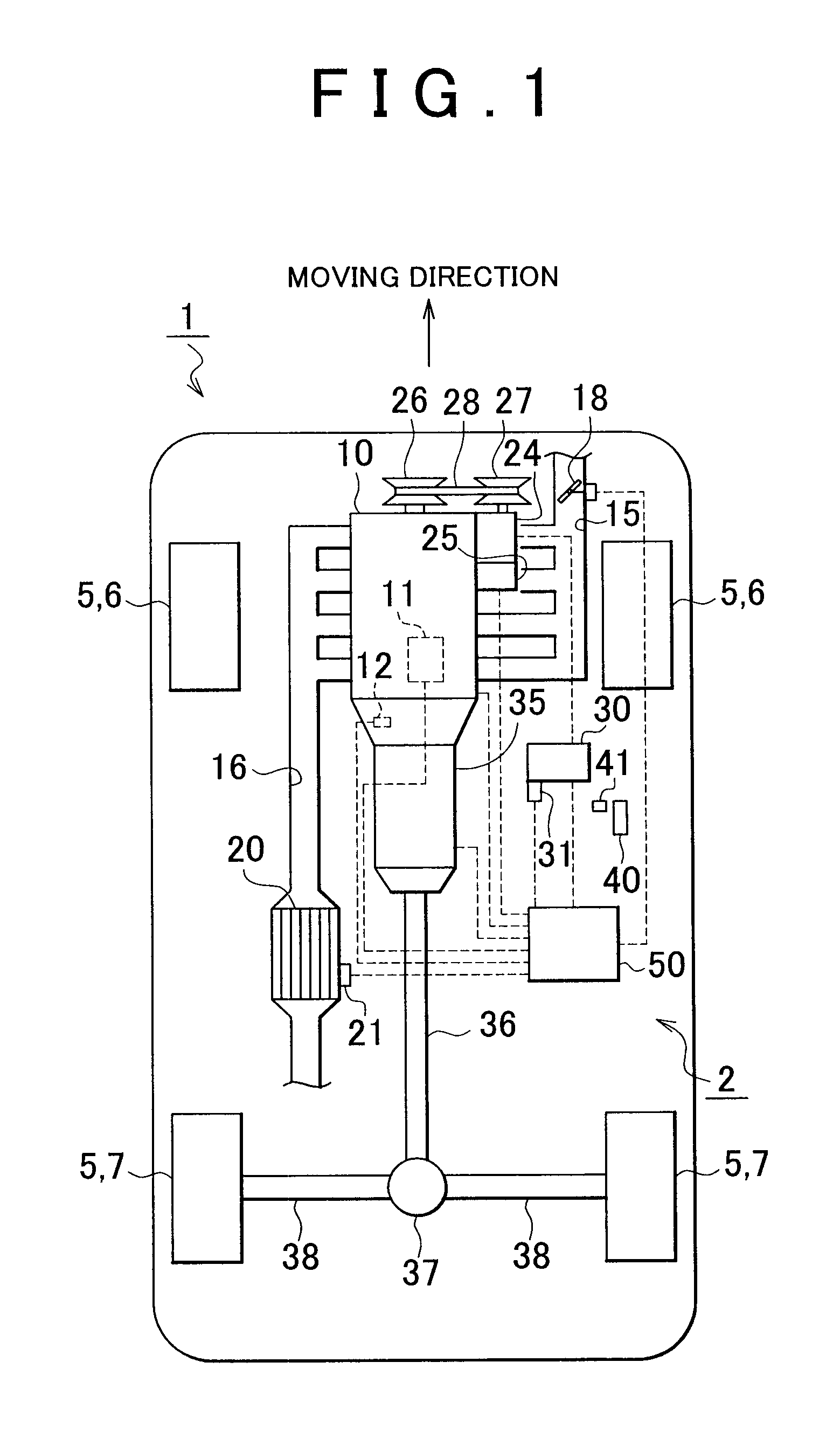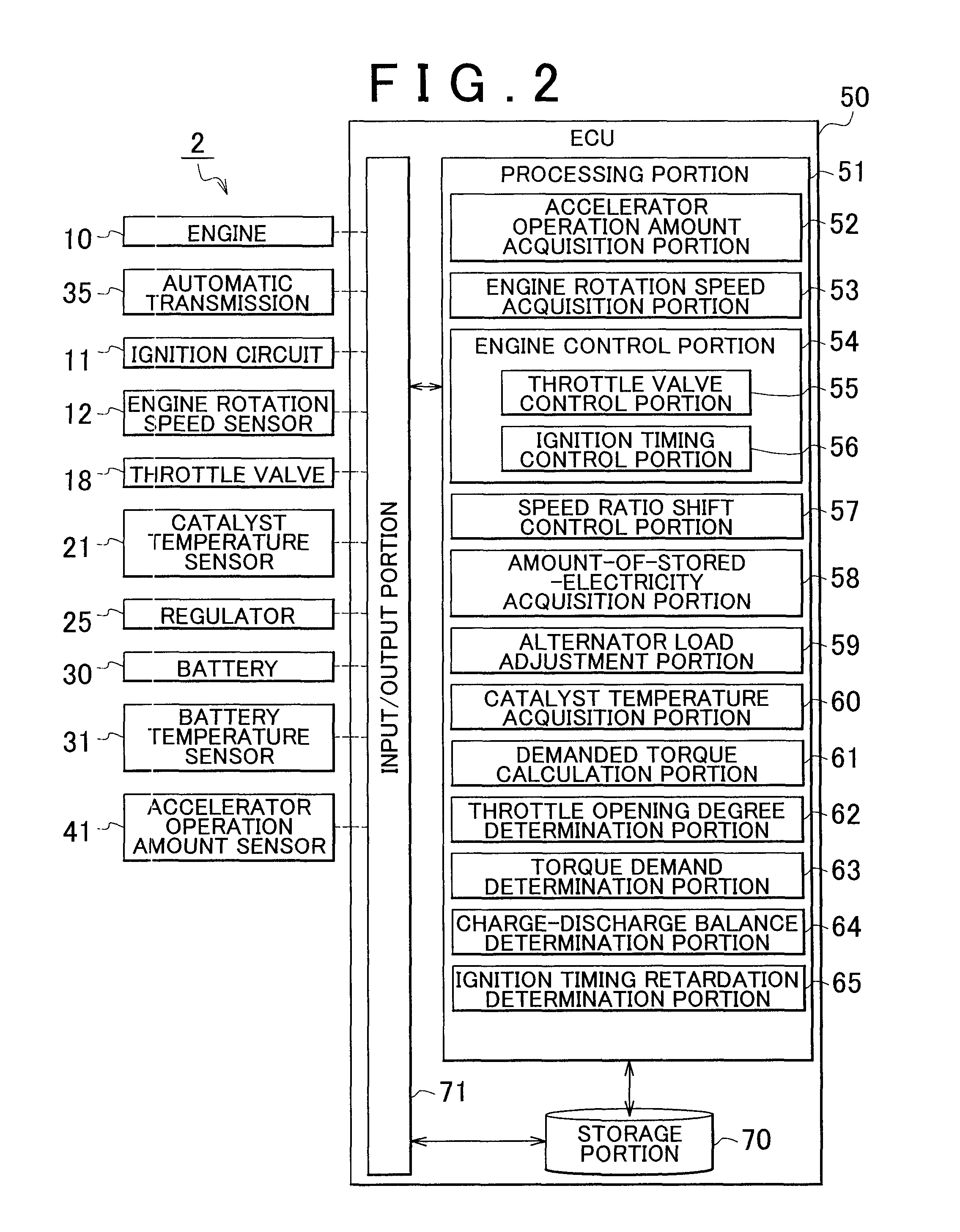Vehicle control apparatus
a technology for controlling apparatus and vehicles, applied in the direction of ignition automatic control, dynamo-electric converter control, instruments, etc., to achieve the effects of reducing accessory load, increasing the amount of electricity generation, and reducing temperatur
- Summary
- Abstract
- Description
- Claims
- Application Information
AI Technical Summary
Benefits of technology
Problems solved by technology
Method used
Image
Examples
first embodiment
[0051]The vehicle control apparatus 2 in accordance with the first embodiment is constructed as described above, and operation of the vehicle control apparatus 2 will be described below. At the time of travel of the vehicle 1, the vehicle control apparatus 2 detects the accelerator operation amount that is the amount of operation of the accelerator pedal 40 that is operated by a driver, via the accelerator operation amount sensor 41 that is provided in the vicinity of the accelerator pedal 40, and acquires results of this detection via the accelerator operation amount acquisition portion 52 provided in the processing portion 51 of the ECU 50. The accelerator operation amount acquired by the accelerator operation amount acquisition portion 52 is transferred to the engine control portion 54 that is provided in the processing portion 51 of the ECU 50. On the basis of the transferred accelerator operation amount, various portions of the engine 10 are controlled by the engine control por...
second embodiment
[0136]Besides, the vehicle control apparatus 80 in accordance with the second embodiment is able to perform the traction control and the vibration restraint control. In the traction control and the vibration restraint control, torque is increased or decreased within short time. Therefore, in the case where the control of torque is performed by the coordinated control combining the control of the degree of throttle opening and the control of the alternator load while the traction control or the like is being performed, the reduced amount of time needed for increasing or decreasing the alternator load contributes to the ability to control the torque without having a great adverse influence on the charge-discharge balance.
[0137]Incidentally, the torque decrease during the traction control is high in the degree of urgency. Therefore, in the case where the amount of control of the torque decrease achieved by employing only the control of the alternator load is not sufficient, the retarda...
third embodiment
[0179]FIG. 12 is an illustrative diagram of the gains of the retardation control of the ignition timing and the control of the alternator load relative to the battery temperature. Various controls performed when the vehicle control apparatus 90 in accordance with the third embodiment controls the torque in conjunction with the demanded torque while the vehicle is travelling. For example, in the case where a coordinated control combining the retardation control of the ignition timing and the control of the alternator load is performed on the basis of the state of the battery 30, the temperature of the battery 30 is also taken into consideration. That is, since the battery 30 declines in the charging efficiency in the case where temperature is low, the amount of electricity generated by the alternator 24 is increased if the battery temperature that is the temperature of the battery 30 declines.
[0180]Concretely, when the torque control through the control of the alternator load and the...
PUM
 Login to View More
Login to View More Abstract
Description
Claims
Application Information
 Login to View More
Login to View More - R&D
- Intellectual Property
- Life Sciences
- Materials
- Tech Scout
- Unparalleled Data Quality
- Higher Quality Content
- 60% Fewer Hallucinations
Browse by: Latest US Patents, China's latest patents, Technical Efficacy Thesaurus, Application Domain, Technology Topic, Popular Technical Reports.
© 2025 PatSnap. All rights reserved.Legal|Privacy policy|Modern Slavery Act Transparency Statement|Sitemap|About US| Contact US: help@patsnap.com



